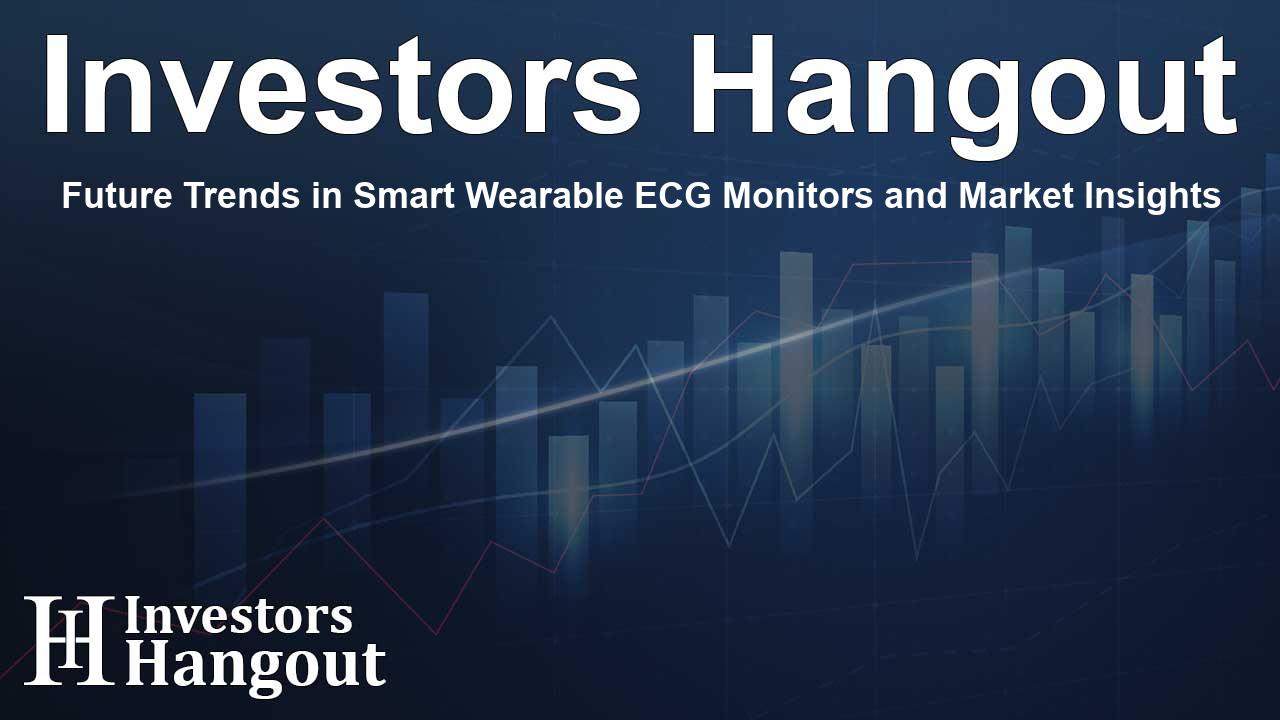Future Trends in Smart Wearable ECG Monitors and Market Insights

Understanding the Rising Smart Wearable ECG Monitors Market
The smart wearable ECG monitors market is experiencing substantial growth due to the increasing awareness surrounding cardiovascular health. This technology, integrating sophisticated monitoring capabilities in accessible formats, has become crucial in preventing heart-related diseases. Currently valued at USD 1.82 billion in 2024, the market size is expected to flourish, reaching USD 4.07 billion by 2032, characterized by a compound annual growth rate (CAGR) of 10.64%. This transformation is primarily influenced by escalating healthcare expenditures, a significant shift towards digital health technologies, and the rise of FDA-approved wearable ECG devices.
Impact of Cardiovascular Diseases on Market Dynamics
The surge in cardiovascular diseases globally is driving the demand for smart wearable ECG monitors. Factors such as aging demographics, inactive lifestyles, and unhealthy eating habits contribute to conditions like coronary artery disease, atrial fibrillation, and arrhythmias. To facilitate early detection of these potential health issues, continuous cardiac rhythm monitoring is essential. Smart wearable ECG monitors present a non-invasive solution, allowing users to track their heart health in real-time, which promotes timely and effective medical interventions. Given that heart disease is a leading global health concern, there is a significant demand for reliable ECG monitoring devices.
Growth of the U.S. Market Segment
The U.S. smart wearable ECG monitors market is particularly noteworthy, having reached USD 0.61 billion in value in 2024. Predictions indicate it could double to USD 1.33 billion by 2032, reflecting a CAGR of 10.34% during the forecast period. The strong foothold in this market segment can be attributed to well-developed healthcare infrastructure and widespread acceptance of digital health solutions.
Key Players Shaping the Smart Wearable ECG Monitors Landscape
Several prominent companies are at the forefront of the smart wearable ECG monitoring sector. Industry leaders, including Apple, Samsung Electronics, and Medtronic, are continuously innovating to enhance user experience and expand their product offerings. These major players are critical in pushing the boundaries of technology in the ECG monitor market. Their focus on integrating advanced analytics and user-friendly designs positions them for substantial market shares moving forward.
Market Segmentation and Its Implications
The smart wearable ECG monitor market can be segmented by type, distribution channel, and end-use. Notably, the patches segment, accounting for 70.15% of the market, leads in growth due to its discreet design that supports long-term monitoring. Meanwhile, the chest straps segment is gaining traction amongst fitness enthusiasts seeking accurate heart rate data.
Distribution Channel Insights
The market shares split shows pharmacies dominating with a 38.44% share in 2024, primarily due to their established credibility as healthcare information sources. However, online channels are miles ahead in terms of projected growth rates, driven by expanding internet access and a shift towards direct-to-consumer purchasing.
End-Use Market Dynamics
In the end-use segment, hospitals claim a significant 43.69% share as they increasingly adopt smart wearable ECG technologies for real-time monitoring and post-operative care. Notably, the home healthcare segment is anticipated to grow rapidly owing to a rising demand for remote patient monitoring.
Regional Trends in the Smart Wearable ECG Monitors Market
Regionally, North America leads the market with an impressive 45.05% share in 2024, thanks to its advanced healthcare systems and timely adoption of digital health technologies. In contrast, the Asia Pacific region is projected as the fastest-growing market with a CAGR of 11.5%, driven by heightened health awareness and an aging population.
Recent Technological Advancements and Innovations
The landscape of smart wearables is continually evolving. In July 2024, Samsung Electronics unveiled its Galaxy Ring and Galaxy Watch Ultra, equipped with AI capabilities to enhance health monitoring and fitness tracking. Furthermore, in September 2023, iRhythm Technologies launched its latest Zio monitor, touted as the smallest yet most powerful cardiac monitor, emphasizing user comfort while boosting long-term monitoring capabilities.
Frequently Asked Questions
What is the current market size of smart wearable ECG monitors?
The market is currently valued at approximately USD 1.82 billion in 2024.
What growth rate is projected for the smart wearable ECG monitors market?
The market is expected to grow at a CAGR of 10.64%, reaching USD 4.07 billion by 2032.
Who are the major players in the smart wearable ECG market?
Key players include Apple, Samsung Electronics, Medtronic, and iRhythm Technologies.
What factors are driving the demand for smart wearable ECG monitors?
The increasing prevalence of cardiovascular diseases and the need for continuous health monitoring contribute significantly to demand.
Which regions are expected to exhibit the most growth in this market?
The Asia Pacific region is projected to grow rapidly, while North America currently leads the market.
About The Author
Contact Riley Hayes privately here. Or send an email with ATTN: Riley Hayes as the subject to contact@investorshangout.com.
About Investors Hangout
Investors Hangout is a leading online stock forum for financial discussion and learning, offering a wide range of free tools and resources. It draws in traders of all levels, who exchange market knowledge, investigate trading tactics, and keep an eye on industry developments in real time. Featuring financial articles, stock message boards, quotes, charts, company profiles, and live news updates. Through cooperative learning and a wealth of informational resources, it helps users from novices creating their first portfolios to experts honing their techniques. Join Investors Hangout today: https://investorshangout.com/
The content of this article is based on factual, publicly available information and does not represent legal, financial, or investment advice. Investors Hangout does not offer financial advice, and the author is not a licensed financial advisor. Consult a qualified advisor before making any financial or investment decisions based on this article. This article should not be considered advice to purchase, sell, or hold any securities or other investments. If any of the material provided here is inaccurate, please contact us for corrections.
